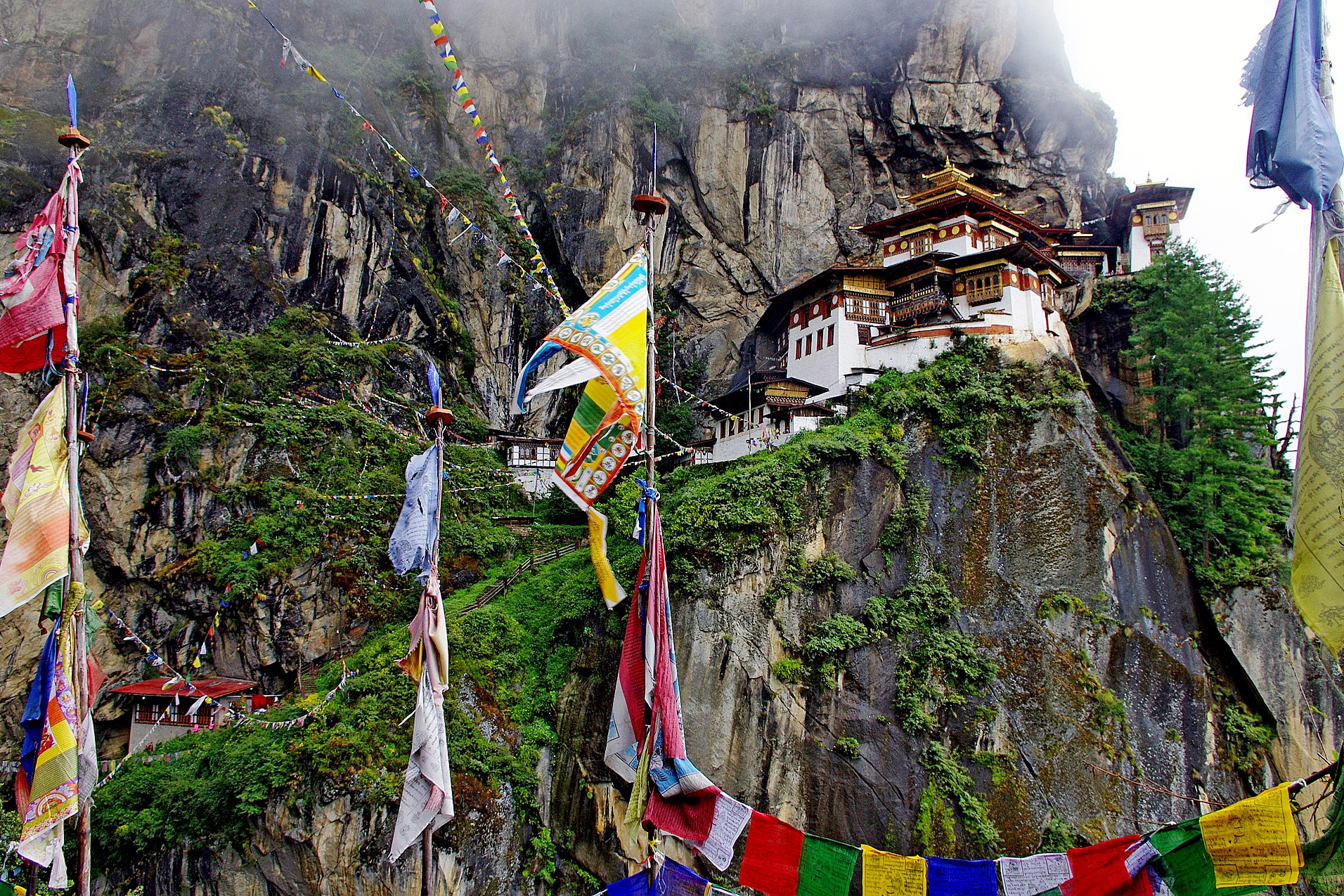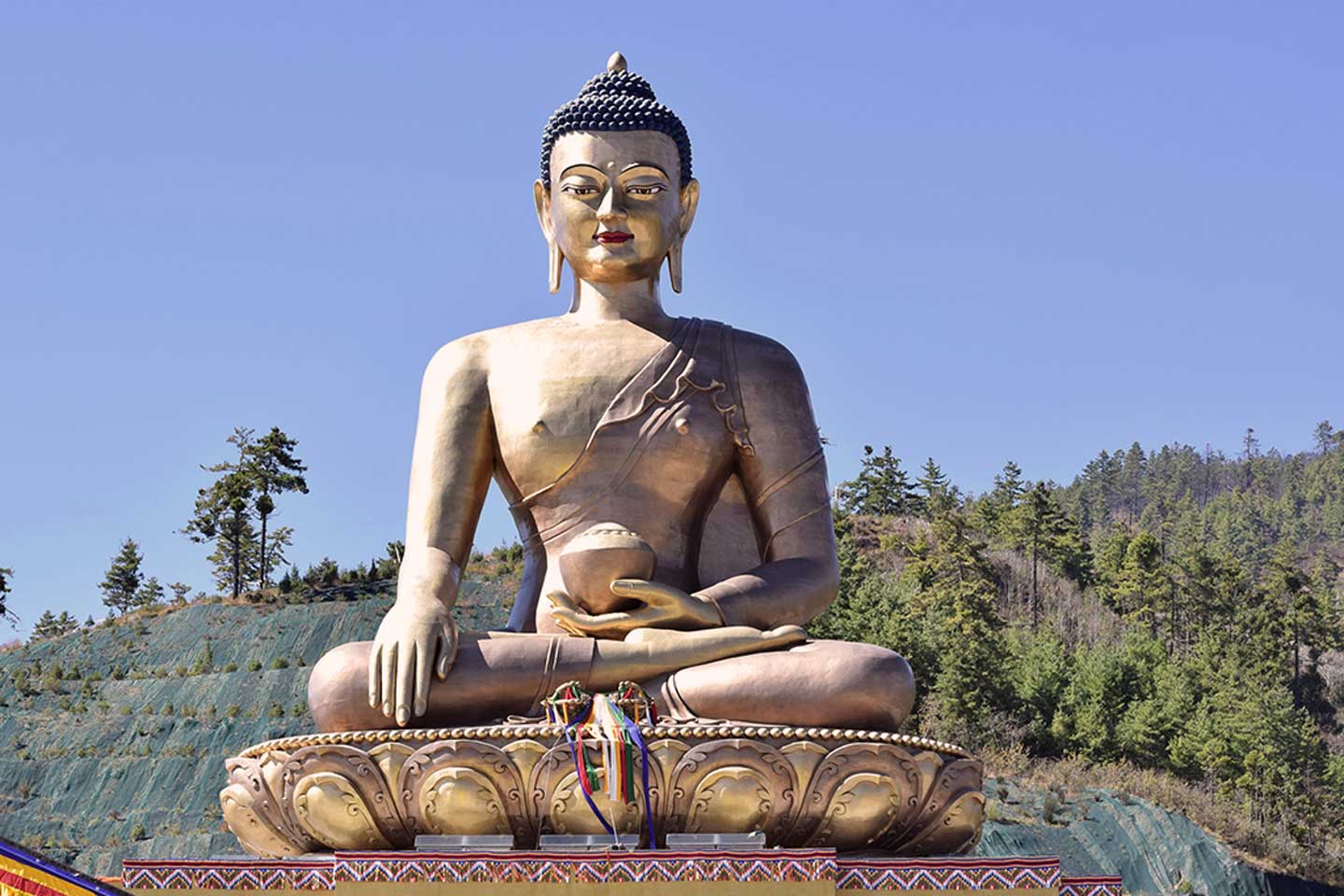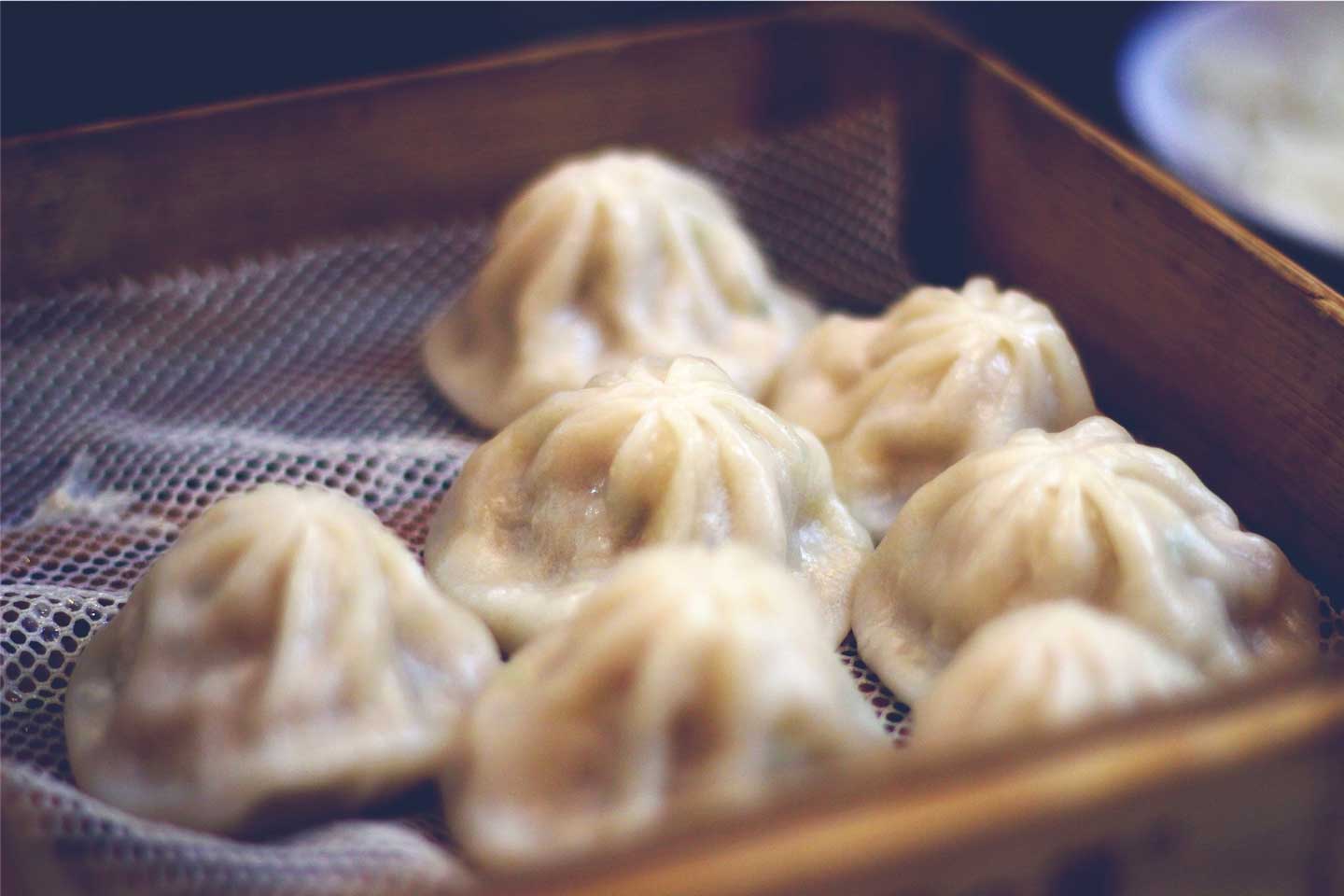BHUTAN TRAVEL GUIDE CONTENTS
At a Glance | Trip Planning | Things to Do | What to Eat | Places to Stay
At a Glance
Bhutan is an isolated nation full of smiles and is part of an incredible heritage that only opened its doors to outsiders in the 1970’s. This bespoken kingdom high up in the clouds is full of snow-capped mountains, ancient Buddhist Dzongs (monasteries), lush forests and Indian inspired delicacies. It is so isolated that the majority of the people there still wear their traditional dresses combined with the fact that you won’t find a single traffic light in the entire country! Pre-arranged travel and a shocking visa cost means that Bhutan closely guards its heritage and ecology by restricting mass tourism. In the country that measures its success by the happiness of its people, the untouched, natural beauty will leave you ever-lasting memories.
Bhutan Quick Information
Currency: Ngultrum (Nu for short). Although Nu is the official currency, Bhutan also uses US dollars or Indian rupees for almost everything. In most of the country, prices will be marked in Nu, and if you pay in dollars, you will likely receive Nu as change during a purchase.
Electricity Socket: 230V AC electricity. Power outlets are two-prong round sockets. To avoid the hassle of having to buy new adaptors for everywhere you go, we recommend picking up a Universal Travel Adaptor before you leave.
Visa: Except for Indians, Bangladeshis, and Maldivians, all other nationalities require a visa to enter Bhutan. Visas are not issued upon arrival. You must first book your visit through a government-approved travel agency (we recommend Yangphel Adventure Travel) and pay in full before you score a visa. The travel agency will request a photo and do all of the paperwork on their end. The visa does cost around USD $250 daily but, the visa includes everything in your tour distributed between a three-star hotel, private transportation, a guide, meals and a royal fee that goes into the kingdom’s education system. For more luxurious accommodations, you will need to pay the daily difference on top of the visa fee reaching up to $1,000 a day in total.
Safety: In Bhutan is it illegal to kill anything living and that applies also to the food you are eating. It is enforced strictly that even meat and poultry is imported from neighboring countries. Being with your own guide will make sure you never get lost. The only thing we don’t recommend is petting the local dogs as packs of dogs may bite if startled.
However safe it is, we always recommend that you get travel insurance. Check out World Nomads for travel insurance to read more about our top insurance recommendation. In general, they have great coverage for travel activities which is why we opt to go with them.
Language: Dzongkha is the official and national language of Bhutan and it refers to the language spoken in the dzong or monasteries. It takes its roots from Tibetan and is also similar in fact to many Chinese dialects. English is the second most popular language as the Bhutanese must study it from a young age in school. Hindi and Nepali are also understood by many.
Transportation: Flying into Bhutan is the most common method but be aware that there is only one international airport in Paro which is an hour away from the capital Thimphu. Only three airlines fly to Bhutan: Druk Air, Bhutan Airlines, and Buddha Air from various cities in Asia. We recommend downloading the Skyscanner App.
Festivals and Celebrations: Bhutan is a country full of Tshechus or yearly religious Buddhist festivals held in each district of Bhutan. They circulate throughout the year and can take up to three-days where a dance stage is erected inside of a fortress and masked dances are performed to local songs. Other festivals tell stories of ancient wars fought with Tibet or simply festivals promoting fruits and vegetables in season. There is a fantastic festival calendar you can view here and plan your trip around that.

Bhutan Trip Planning
High seasons are spring and autumn (March, April, May, September, October, and November) and are the best times to visit Bhutan as the climate is perfect. Temperatures are around 70 to 75 degrees Fahrenheit but can drop down at night to 60 unexpectedly. Avoid summer as it brings heavy rains and thick fog. Whichever period you decide to arrive in, pack plenty of sun screen as the UV rays are much stronger at a higher altitude.
If you want to visit in Winter, temperatures drop to around 50 degrees Fahrenheit with chances of snowfall in certain districts. Although we wouldn’t suggest hiking during the winter period, you do get to see some beautiful snow-capped Himalayas. But you run the risk of road closures. Our recommendation is to plan your trip around one of the many Tshechus festivals in Thimphu or Paro as it will complete a full journey of culture and food you can’t experience regularly.
Rough Budget
Getting to Bhutan is the expensive part. Once you are in Bhutan things are relatively cheap. Depending on the type of luxury you booked with your travel agency local dishes, handcrafts and tourist activities are actually not that expensive. Most fortresses and temples are free of charge (small donations of $1 may be kindly requested to support the monks) and walking is free. I’d say about $20 to $30 per day for your visit once there is more than enough.

Accommodation
Budget: $200 – $250 a day (includes visa stay package)
Splurge: $1,000++ (luxury accommodations are few but memorable)

Food (Typical Meal For One)
Local Cafes: $1 – $2
Mid-range Restaurant: $3-$7
Gourmet Meals: $10 – $20

Transport
Private Transport is typically included in the visa fee. These can go from city to city at your own leisure. Metered Taxis: tariffs start at $1-$2 depending on the time and day. There are family taxis available with 6-8 seats. Buses: You can hop onto a local bus (which will just take you a few miles down the road) for 20 Nu ($0.30). Just expect to wait quite a while for it.
What to Pack for Traveling Bhutan
For Bhutan, aim to pack for the season you are visiting. It is always a good idea to bring a jacket as the temperatures can drop in big increments throughout the day. If that jacket is a rain jacket, even better as the weather can be quite unpredictable. Long pants, jeans and t-shirts are the best option year around unless you visit in winter then, of course, pack your sweaters.
Keep in mind that the locals will be wearing their traditional gho, or its female equivalent kira, which is pretty covered. Big fancy labels and high end brands are not customary in Bhutan – the fact of the matter is that it’s still important to be respectful of the country’s customs.
Best Things to Do in Bhutan
Visit the Tiger’s Nest Monastery

The story told is that Guru Rinpoche asked his Bhutanese girlfriend to turn into a flying tiger. When she agreed the mighty Guru then hopped aboard and flew into the hills. He found the perfect cave and decided to meditate for three years, three months and three days to subdue evil demons residing within it. Today, this cave is guarded by Paro Taksang or The Tiger’s Nest. One of the most holy sites in Bhutan this temple is located 3,120 metres up and takes about two to three hours to trek.
Try the Local Some Dolma
If you want to infuse yourself into the local social life, trying Dolma, an addictive mixture of areca nut, lime paste and betel leaf is one idea. Around a third of the country chews it and you’ll find friends sharing a bag after meetings and offering it during religious ceremonies. Chewing this nutty snuff releases a pungent aroma and you can’t miss the red stain it leaves on most streets and teeth. Trying it won’t hurt you but be aware sometimes, the combination of leaf, lime, and nut plus many unnatural chemicals that are extremely bad for your health.
Make Your Very Own Stamp
If you want to try something different, you can put your face on a stamp and use it anywhere in the country. The Bhutan Post Office Headquarters in Thimphu will take your photo, put it on a stamp, stick them on a greeting card and mail it out; all for 200 Nu ($3).
Travel for Cheese
Oddly enough, there is a place in Bhutan called Bumthang, which is referred to as the mini Switzerland of Bhutan. This area produces some of the richest crops and European inspired delicacies. One of them is cheese. Take a trip to a local cheese farm and experience a wide range of Emmental or Gouda cheeses, paired with organic honey, raw buckwheat pancakes and chewy hand-rolled noodles.
Try Your Aim in Archery
The national sport of Bhutan, dha or archery is a male-dominated activity but both female and male tourists are encouraged to try. The best place to try is Changlimithang Stadium and Archery Ground that hosts some of the best archers in Bhutan.
Understand the Phallus Fixation
You will naturally notice a shocking admiration for phalluses around Bhutan. Some are unadorned. Others are decorated with ribbons. In Punakha, you need to visit Chimi Lhakhang, a monastery dedicated to Drukpa Kunley, Bhutan’s favorite saint and a man who referred to his penis as the ‘divine thunderbolt.’

Visit the Buddha Dordenma
Sitting at 51 meters tall in Thimphu, Buddha Dordenma is an impressive golden Buddha that overlooks the entire valley. There are also tents and camps that locals use where you will be welcomed with open hands.
Go Trekking
Bhutan is definitely the golden standard for hiking. From gentle treks to challenging 25-day adventures, Bhutan offers something for all levels. For more information visit our favorite trekking guide here.
What to Eat in Bhutan
While Bhutanese food isn’t commonly known in other countries, chances are you have had similar variations in Indian or Chinese cuisine. Regardless of the dish, chilies and spice will always accompany everything. Pulling cooking styles from neighboring India and Nepal and tossing in cheese (yes cheese), gives you an idea of Bhutanese food.
As the state religion is a strict interpretation of Mahayana Buddhism, it is illegal to kill or butcher, however, Bhutan loves its meat. They get around this quandary by outsourcing butchering to India.
Ema Datse: Literally meaning chili cheese, this simple curry of chillies is combined with farmer’s cheese and paired with red rice. In Thimphu, we would recommend Ama Restaurant (and karaoke).
Dhachu: A simple milk curd eaten to cool the mouth from all of the chillies.
Jasha Maroo or Maru: This dish is likened to a stew, this combination of chilies, onions, tomato, garlic, coriander leaves and ginger is cooked with diced chicken or beef. It is usually served over a plate of red rice.
Red Panda Beer: Identified with a bright red label, Red Panda Beer is the first microbrewery ever to welcome a Hefeweizen beer brewed in Bumthang.

Momos: Probably the favorite of foreigners, momos are a form of Chinese dumpling that can be filled with a variety of things from cheese, minced pork, cabbage or ginger, and beef. Dip them in a chili mix for ultimate flavor.
Places to Stay in Bhutan
Places To Stay In Bhutan
From luxury hotels in the big cities to rustic guesthouses in the villages, Bhutan has something for every taste. Cities like Thimphu and Paro will obviously have a lot more options, but even in the less known locations like Gangtey, you’ll find a variety of options. Remember to always book your accommodation through the travel agency or via the hotel directly. We usually check websites like Booking.com, Agoda, or Hostel World.